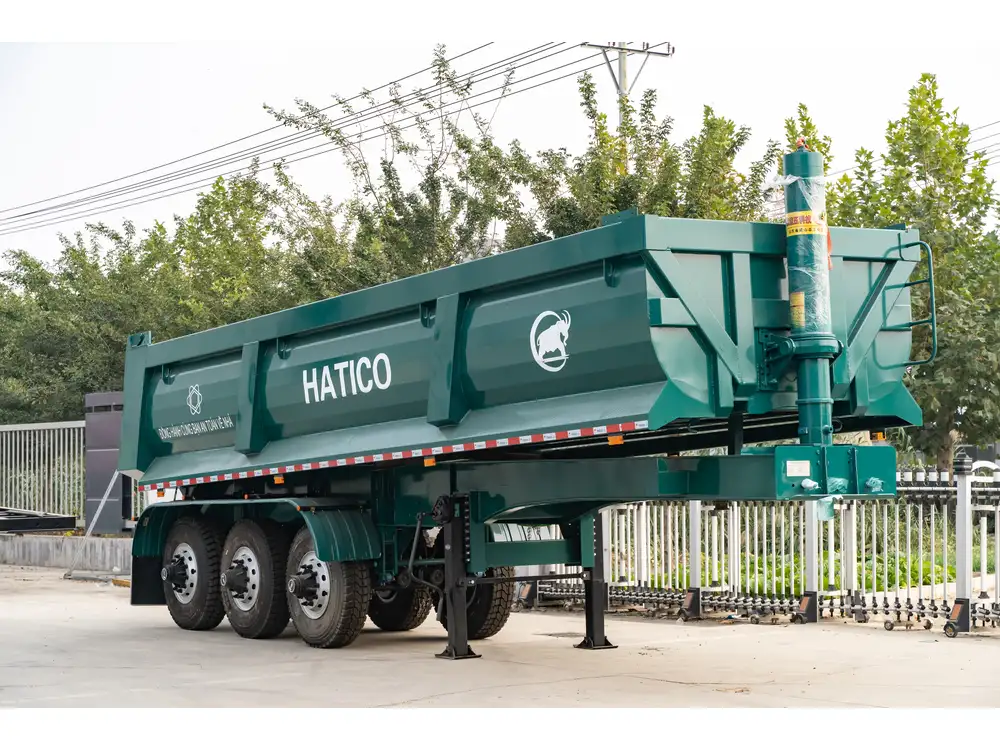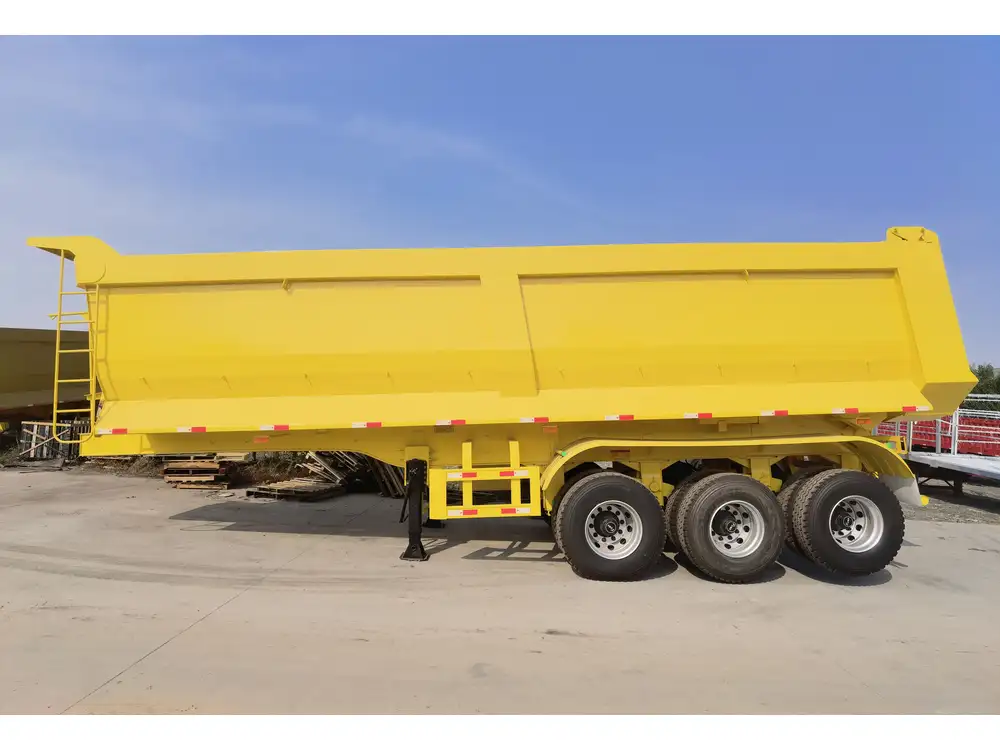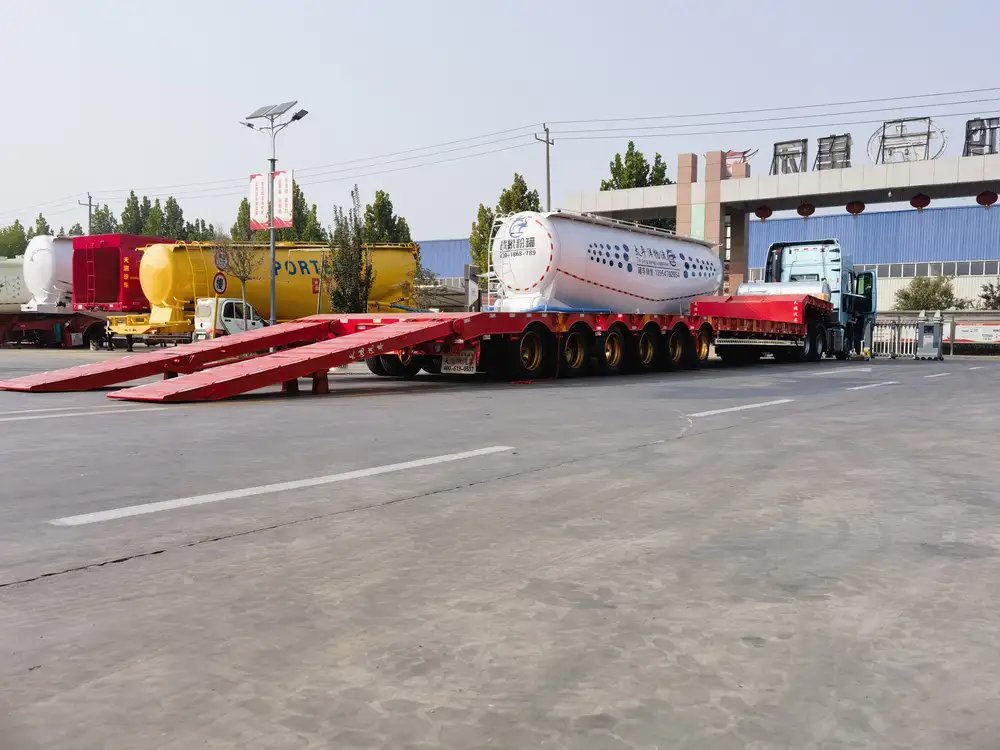When it comes to the logistics and transportation industry, understanding the dimensions of equipment, especially the semi-trailer, is paramount. A semi-trailer, as part of a semi-truck, plays a pivotal role in the movement of goods across vast distances. In this article, we meticulously explore the lengths of semi-trailers, the factors influencing their dimensions, and the implications for transportation regulations.
Semi-Trailer Lengths: The Basics
Common Standard Lengths of Semi-Trailers
The standard lengths of semi-trailers can vary depending on several factors, including the type of trailer, the goods being transported, and regional regulations. Here’s a breakdown:
| Trailer Type | Typical Length Range |
|---|---|
| Flatbed Trailers | 48 to 53 feet |
| Refrigerated Trailers | 48 to 53 feet |
| Dry Van Trailers | 48 to 53 feet |
| Tanker Trailers | 40 to 53 feet |
| Lowboy Trailers | 30 to 45 feet |
| Dump Trailers | 14 to 48 feet |

National and State Regulations
Understanding semi-trailer lengths also requires keen knowledge of regulations, both federally and at the state level. The Federal Motor Carrier Safety Administration (FMCSA) outlines standard lengths, yet individual states may impose stricter requirements.
Interstate Regulations: On a federal level, the maximum length for a semi-trailer is generally 53 feet. However, states like California and Florida have their own regulations which can influence permissible lengths.
State-Specific Considerations: Some states allow longer combinations or certain configurations that might extend beyond 53 feet. It’s crucial for transportation companies to familiarize themselves with local regulations to ensure compliance to avoid fines or operational delays.
The Impact of Trailer Length on Logistics
Efficiency and Capacity Analysis
Determining the length of a semi-trailer isn’t merely a matter of measuring. It profoundly impacts operational efficiency and load capacity:
Volume Capacity: Loading more product per trip can reduce transportation costs. A longer trailer can often accommodate additional pallets, which may significantly decrease the per-unit shipping cost.
Maneuverability: Longer trailers can pose challenges in tight spaces. A semi-trailer of 53 feet might excel on highways but could struggle in urban settings or confined loading docks.
| Consideration | Long Trailers (53 ft) | Short Trailers (48 ft) |
|---|---|---|
| Load Capacity | Higher capacity | Slightly lower capacity |
| Maneuverability | Challenging in tight areas | Easier to navigate |
| Fuel Efficiency | Varies; needs careful calculation | Often slightly better |

Load Types and Optimal Trailer Selection
The selection of trailer length can also hinge upon the type of goods being transported:
General Freight: For most products transported on flatbeds or dry vans, the standard 53-foot trailer is sufficient.
Heavy Equipment: When transporting heavy loads such as machinery, a lowboy trailer ranging from 30 to 45 feet is often preferred to keep the center of gravity low.
Bulk Liquid Products: Tanker trailers, generally 40 to 53 feet long, are designed to transport liquids, like fuel or chemicals, and their design may necessitate restrictions that differ from dry goods transportation.
Frequently Asked Questions About Semi-Trailer Lengths
1. What is the longest semi-trailer legal on the road?
The maximum legal length for a semi-trailer in most states is typically 53 feet. However, certain exceptions apply, especially for specialized transport vehicles that may extend longer in certain jurisdictions.

2. Can a semi-trailer be extended?
Many semi-trailers come with sliding tandem axles that allow for minor adjustments in length for compliance with specific state regulations. However, extending a trailer beyond its designed specifications can compromise safety and legal compliance.
3. How does trailer length influence fuel efficiency?
Longer trailers can potentially reduce fuel efficiency due to increased weight and aerodynamic drag. Conversely, loading efficiently can offset these costs by reducing the number of trips needed to transport goods.
4. Are there weight limits for semi-trailers based on length?
Yes, weight limits are often proportional to the trailer length. The Federal Bridge Formula helps determine the allowable gross vehicle weight based on axle spacing and total length, ensuring safety during transportation.

Best Practices for Selecting the Right Semi-Trailer Length
1. Assess Load Requirements
Before selecting a semi-trailer length, scrutinize the load requirements thoroughly. Understand not just the volume but also the weight and nature of the goods.
2. Evaluate Route Specifications
Insight into the delivery route is invaluable. Urban vs. rural routes can heavily influence trailer selection—navigating narrow city streets demands shorter, more maneuverable trailers.

3. Compliance with Local Regulations
Make sure to stay updated on both state and federal regulations that apply to semi-trailer use. Regulations can change, and non-compliance carries financial penalties and operational setbacks.
Future Trends in Semi-Trailer Design and Length
Innovations in Trailer Technology
With the logistics industry evolving rapidly, advancements in trailer technology present several interesting possibilities:
Aerodynamic Designs: Trailer manufacturers are incorporating sleek designs to enhance fuel efficiency. Improved aerodynamics can allow longer trailers to travel with lower energy consumption amid growing eco-consciousness.
Smart Trailers: Technology such as GPS tracking systems and telematics sensors allows fleet managers to monitor trailer performance in real time. This innovation is critical for managing logistics in an even more efficient manner.

Environmental Impact and Regulations
As global attention continues to focus on environmental issues, regulations regarding emissions and overall fuel consumption may tighten. Units with lower emissions and more stringent design specifications will likely become the standard, influencing both the length and configuration of semi-trailers.
Conclusion: The Integral Role of Semi-Trailer Length in Logistics
The lengths of semi-trailers serve as a fundamental building block for the logistics and transportation industry, influencing everything from load capacity to regulatory compliance. In a field where every inch can impact efficiency and every pound matters, making the right choices concerning trailer dimensions is far more than a mere preference—it’s a necessity.
Understanding the intricate balance of size, efficiency, and adherence to regulations will empower logistics professionals to optimize their operations, ensuring they remain competitive in an ever-evolving market landscape. Keeping abreast of regulations, selecting appropriate trailer types based on cargo needs, and anticipating future trends will position any logistics provider for success in the industry.
By implementing these best practices and remaining adaptable to innovations, companies can navigate the complexities of semi-trailer dimensions with confidence and adeptness.



